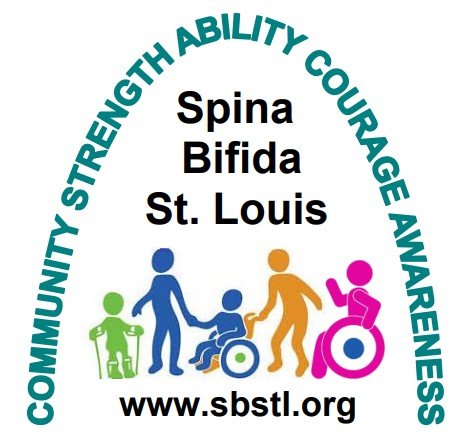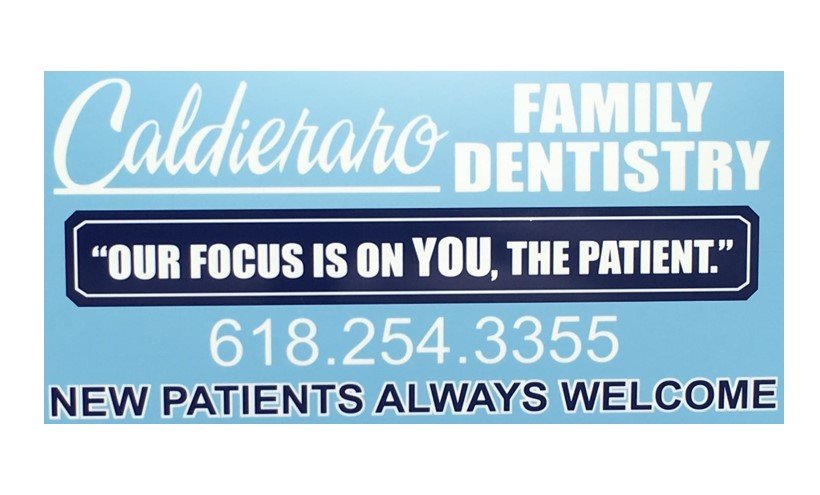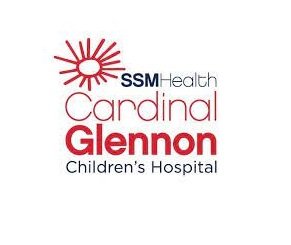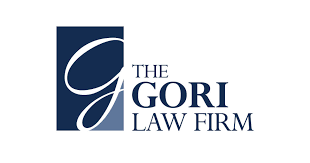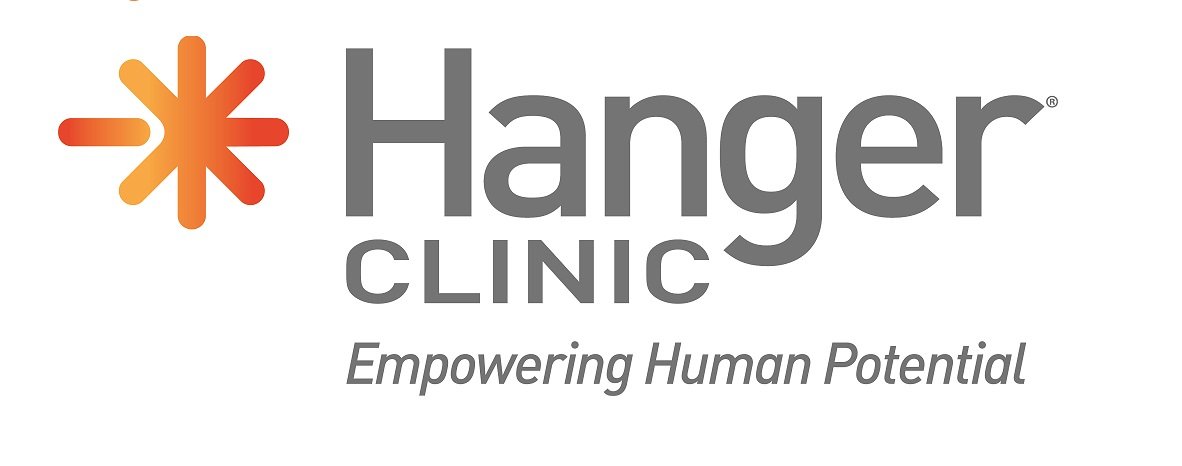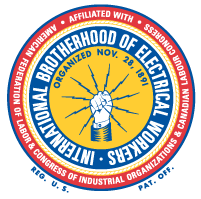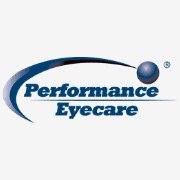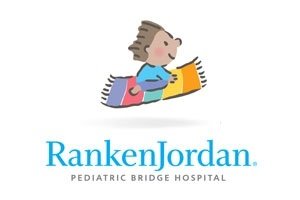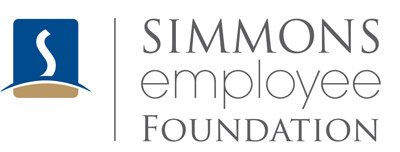Our Mission: We will provide service, support and opportunities to develop the maximum potential of all individuals born with Spina Bifida and neural tube defects and their families; and to assure development of the best possible quality of life.
Upcoming 2024 SBSTL Events
-

Birth to 5 Meet-up
Saturday, April 27th from 2-4 pm
Angie’s Playground in Manion Park
-

Spring Retreat
Friday, May 17 - Sunday, May 19
Babler State Park
-

Golf Scramble
Saturday, June 1st
Rolling Hills Golf Course
-

Atomic Pinball Arcade Meet-up
Sunday, June 30th, 3:30-6:30 pm
102 N Whitelaw Ave, Wood River, IL 62095
Request A Hospital
Gift Card
Activity Scholarship Application
Educational Scholarship Application
Financial Assistance Grant Application
Frequently Asked Questions
-
Spina Bifida is the most common permanently disabling birth defect that is associated with life. Approximately 166,000 individuals in the United States have Spina Bifida.
It’s a type of neural tube defect (NTD) that occurs when a baby’s neural tube fails to develop or close properly – the literal meaning for Spina Bifida is “split spine.” Typically occurring within the first 28 days of pregnancy while the neural tube is forming, Spina Bifida often occurs before a woman knows she is pregnant.
Commonly referred to as the “snowflake condition” of birth defects because no two cases are the same, Spina Bifida can range from mild to severe. The severity depends on everything from the size of the opening to the location on the spine.
Four Types of Spina Bifida
1. Occult Spinal Dysraphism (OSD): Infants with a dimple in their lower back must be checked using special tools and tests to verify the presence of OSD. Other contributing signs are red marks, hyperpigmented patches on the back, tufts of hair or small lumps. In OSD, the spinal cord may not grow the right way and can cause serious problems as a child grows up.
2. Spina Bifida Occulta: There is an opening in one or more of the vertebrae (bones) of the spinal column without apparent damage to the spinal cord. Approximately 15% of all Americans may have spina bifida occulta, but because most experience little or no symptoms, very few of them ever know that they have it.
3. Meningocele: The meninges, or protective covering around the spinal cord, has pushed out through the opening in the vertebrae in a sac called the “meningocele”. However, the spinal cord remains intact. This form can be repaired with little or no damage to the nerve pathways.
4. Myelomeningocele: This is the most severe form of spina bifida, in which a portion of the spinal cord itself protrudes through the back. In some cases, sacs are covered with skin; in others, tissue and nerves are exposed. Generally, people use the terms “spina bifida” and “myelomeningocele” interchangeably.
Characteristics
The effects of myelomeningocele, the most serious form of spina bifida, may include muscle weakness or paralysis below the area of the spine where the incomplete closure (or cleft) occurs, loss of sensation below the cleft, and loss of bowel and bladder control. In addition, fluid may build up and cause an accumulation of fluid in the brain (a condition known as hydrocephalus). A large percentage (70%-90%) of children born with myelomeningocele have hydrocephalus. Hydrocephalus is controlled by a surgical procedure called "shunting," which relieves the fluid buildup in the brain. If a drain (shunt) is not implanted, the pressure buildup can cause brain damage, seizures or blindness. Hydrocephalus may occur without spina bifida, but the two conditions often occur together.
For Additional Resources:
https://www.spinabifidaassociation.org/what-is-spina-bifida-2/
https://www.spinabifidaassociation.org/expectant-parents/
https://www.spinabifidaassociation.org/resource/
Reach out to SBSTL (sbstl@charter.net or (314) 968-2244 if you have any further questions.
-
Helpful Links for Missouri & Illinois:
https://docs.google.com/document/d/1I5tfTGaVdnCqG6TiFiegpUtZufqdW7aFI5eEYjrxbn8/edit?usp=sharing
Book Suggestions:
SBSTL does not endorse any of the books listed, purchasing them is under your own intentions. They are only offered as a reference.
https://docs.google.com/document/d/12_38VlOK6BURA4Ap__wiQIuxqWnHQbOd3yX116Ujd9Y/edit?usp=sharing
-
Need a little help understanding the terms the medical doctors and staff gave you about your new bundle of joy? Check out this list of dictionary medical terms or words found in or relating to Spina Bifida with a brief dictionary definition/explanation.
ABDUCTION - The sideways movement of the limbs away from the midline.
ADDUCTION - The sideways movement toward the midline.
ALPHA-FETOPROTEIN (AFP) - High levels of this protein in the mother's blood or amniotic sac. Often associated with a neural tube defect.
AMBULATORY - Capable of walking.
AMNIOCENTESIS - A process by which the amniotic (or fetal) sac is punctured by a needle and fluid removed. The amniotic fluid removed can then be studied for detection of neural tube defects and chromosomal abnormalities before the baby is born.
ANENCEPHALY - Open neural tube defect with absent brain development that leads to early death.
ANOMALY - An organ existing in abnormal form, structure or location.
ANTICHOLINERGIC MEDICATION - A drug used to relax the bladder.
APNEA - The cessation of breathing noted by color changes, pallor and/or cyanosis and lack of chest wall movement.
AQUEDUCTAL STENOSIS - The passageway (aqueduct) connecting the third and fourth ventricles of the brain becomes narrowed, thus blocking or reducing the normal flow of cerebrospinal fluid.
ARNOLD-CHIARI MALFORMATION - See Chiari Malformation.
ARTHRODESIS - The surgical fixation of a joint.
ATAXIA - A neurological condition in which coordination of movement is impaired.
ATTENTION DEFICIT - A specific difficulty with concentration that can impair school performance and social relationships.
AUTONOMIC NERVOUS SYSTEM - The nerves that regulate automatic functions of the body.
BODY CAST - An immobilizing jacket that is molded to the legs and lower body.
BRACE - An aid for the support of a joint.
BRAINSTEM - The lower portion of the brain important for breathing and other vital functions.
CALCANEOVALGUS - A foot deformity in which the heel is turned outward and the front part of the foot is elevated.
CATHETER - A tube used to remove fluid from a cavity. A urinary catheter is passed through the urethra into the bladder in order to withdraw urine.
CAT SCAN (Computerized Axial Tomogram) - An x-ray exam in which a scanner revolves around the head and takes pictures to obtain cross-section views which give good visualization of the ventricular system.
CEREBROSPINAL FLUID (CSF) - A water-like liquid made by the brain which fills the ventricles inside the brain and surrounds the brain and spinal cord to provide nourishment and protect them from shock.
CERVICAL VERTEBRAE - The first seven bones of the spinal cord.
CHIARI MALFORMATION - The Chiari (11) is a malformation of the hindbrain, or brainstem associated with myelomeningocele and can cause hydrocephalus and other symptoms. The cerebellum may be elongated and drop down along the lower brainstem, through the case of the skull and into the cervical canal: the fourth ventricle may be elongated and enter the cervical canal. Although most people with myelomeningocele have the Chiari Malformation, it is estimated that only 20-30 percent become symptomatic.
CHOROID PLEXUS - Small flower-like tufts in the ventricular system that produce cerebrospinal fluid.
CLUBFOOT - A deformity of the foot that is twisted at the ankle so that it cannot rest properlyon the ground.
COCCYX - The four fused vertebrae that make up the tailbone.
COGNITIVE - Pertaining to functions of the brain such as thinking, learning, and processing information.
COLLAGEN IMPLANT - A method used to treat incontinence when leakage is caused by lack of control or poor control of urine flow from the bladder.
CONGENITAL - Existing at birth.
CONTRACTURES - Fixed deformities at the joints resulting in loss of range of motion.
CORPUS CA" OSUM - A midline structure in the brain.
CRANIUM BIFIDUM (Encephalocele) - A defect in the skull with protrusion of brain tissue.
CREDE - A technique which consists of pressing down and inward with the hand over the bladder to empty it.
CYANOSIS - Bluish tinge around the mouth or nail indicating a lack of oxygen.
CYSTOMETRIC EXAM - An examination that measures the pressure inside the bladder. It also aids in diagnosis of bladder muscle condition.
DECUBITUS - Pressure sore or skin ulcer.
DERMATOMES - The areas of skin that get their sensation from different spinal nerves.
DETRUSOR - The bladder muscle.
DETRUSOR-SPHINCTER DYSSYNERGIA (DSD) - Failure of the bladder sphincter to open up when the bladder muscle contracts.
DISABILITY - A lifelong condition affecting important activities or functions of daily living.
DISLOCATED - The displacement of a bone from its normal position in a joint.
DISTAL - The end of a shunt catheter furthest away from the head.
DORSIFLE - A backward bending of the forefoot at the ankle.
DURA - The outer membrane of the meninges.
ENDOCRINOLOGIST - A physician specializing in diabetes, the thyroid, and the endocrine gland. Most children with spina bifida and/or hydrocephalus experience delays in growth or premature puberty and would benefit from this specialist's care.
ELECTROENCEPHALOGRAM - A graphic picture of the electrical impulses of the brain, or brainwaves.
ENCEPHALOCELE - See cranium bifidum.
ENEMA - Installation of fluid into the rectum to empty the bowel.
EQUINOVARUS - Similar to equinus, with additional inward turning of the forefoot.
EQUINUS - Deformity of the foot in which the heel is pulled up and the forefoot is pulled down.
ESOPHAGUS - The muscular tube extending from the back of the throat to the stomach.
EVERSION - Movement of the foot in which the sole turns outward away from the midline.
EXPRESSIVE LANGUAGE - The ability to express ideas in words and sentences.
EXTENSION - The straightening of a joint.
FEMUR - The thighbone, extending from the pelvis to the knee.
FERTILITY - Capable of reproducing.
FLEXION - The bending of a joint.
FOLIC ACID - A "B" vitamin that is necessary to form essential body proteins and genetic materials. It promotes the synthesis of the oxygen-carrying blood protein hemoglobin.
FONTANEL - The soft spot on a baby's skull where the bones have not yet grown firmly together.
GAIT - The manner of walking.
GASTROCS - The calf muscles.
GASTROESOPHAGEAL REFLUX - Excessive regurgitation from the stomach into the esophagus.
GENETICIST - A physician or professional person who counsels parents on the risk of having an infant with a particular inherited disorder.
HAMSTRINGS - The large muscles at the back of the thigh.
HANDICAP - An environmental or attitudinal barrier facing a person with a disability.
HEEL CORD - The Achilles tendon below the calf muscle.
HERNIATE - A protrusion of a loop of tissue through an abnormal opening.
HIP ADDUCTORS - The muscles on the inside of the thigh that move the leg sideways toward the midline.
HYDROCEPHALUS - The increased accumulation of cerebrospinal fluid (CSF) within the ventricles of the brain, resulting from interference with normal circulation and absorption of the fluid.
HYDROMYELIA - The increase of fluid in the central canal of the spinal cord. HYDRONEPHROSIS - Excessive cerebrospinal fluid in and around the brain. HYPERTONIA - A neurological condition of low tone, that is, floppiness.
I.E.P. - Individual education plan (school age).
ILEAL CONDUIT - Surgical procedure to drain the kidneys through an opening on the abdomen, thus bypassing the bladder.
I.P.P. - Individual planning program (preschool age).
IMPACTION - An accumulation of feces in the rectum causing severe constipation.
INCONTINENCE - The inability to control urine or bowel movements.
INTRACRANIAL PRESSURE - A build up of pressure within the skull cavity.
INVERSION - Movement of the foot in which the sole turns toward the midline.
I.V. (Intravenous) - Used to inject fluid into a vein. An I.V. may be used to provide nutrition or may be a means of injecting medicine into the blood stream.
I.V.P. (Intravenous pyelogram) - A test that takes an x-ray of the kidneys. The person is given an injection c -dye through the I.V. which "I lights up" the kidneys on the x-ray.
KYPHOSIS - An exaggerated outward curvature of the spine.
LEARNING DISABILITY - A specific difference in learning that leads to underachievement in school.
LIPOMA - Swelling made of fat; sometimes found with myelomeningocele.
LOCOMOTION - Moving by walking, crawling, or the like.
LORDOSIS - An exaggerated inward curvature of the spine.
LUMBAR VERTEBRAE - The five vertebrae in the low back area.
MACROCEPHALY - An abnormally large head size.
MAGNETIC RESONANCE IMAGERY (MRI) - A scan that uses magnetic energy to give a clear black and white picture of the brain, cervical canal, and spine. It does not involve radiation.
MENINGES - Three layers of membranes covering the brain and spinal cord.
MENINGITIS - Infection or inflammation of the meninges.
MENINGOCELE - A protrusion of the meninges out or an opening in the vertebral column. A meningocele contains only cerebrospinal fluid and no neural tissue.
MICRCOCEPHALY - An abnormally small head, usually accompanied by developmental delay.
MYELOMENINGOCELE - or "open spine" - A protrusion of the meninges, spinal cord and nerves out of an opening in the vertebral column. Skin or a thin membrane may cover this spinal cord defect. It is also known as spina bifida.
NEURAL PLACODE - Abnormal, splayed-open nerve tissue at the site of the neural tube defect.
NEURAL TUBE DEFECT - A birth defect somewhere in the neural tube, which consists of the brain, spinal cord, and nervous system.
NEUROGENIC BLADDER - Loss of nerve supply to the bladder resulting in an inability to voluntarily control the bladder.
NEUROLOGICAL - Pertaining to the nervous system.
NEUROLOGIST - A physician who specializes in the physiologic functions of the brain and nervous system, la. this doctor may run tests if seizures are suspected.
NEUROSURGEON - A physician who specializes in surgery to the brain and nervous system. A neurosurgeon performs the initial closure surgery in the spina bifida and a placement of a ventricular shunt, if necessary.
N.P.O. - Nothing by mouth (literally nothing passed orally).
OCCUPATIONAL THERAPIST - A therapist who specializes in child development and who will evaluate your child's skills, especially in the areas of fine motor and eye-hand coordination, and general development. The OT can assist you and your child in daily living skills and is mainly concerned with hand strength and use of arms and hands.
OPHTHALMOLOGIST - A physician who specializes in the treatment of disorders of the eye.
OPISTHOTONOS - Backward arching of the head, neck or back with stiffness of the entire body(Chiari II symptom).
PULSE - The rate and power of the heartbeat.
PYRAMIDAL TRACT - A band of nerve fibers originating in the cortex and connecting with cell bodies in the spinal cord. It plays an important part in the control of voluntary movement.
QUADRICEPS - The group of muscles on the front of the thigh that extend the knee.
QUADRIPLEGIA - Paralysis of all four limbs.
RACHISCHISIS - A congenital condition in which the spinal cord is completely exposed and deformed.
RANGE OF MOTION - The full extent of movement of a particular joint.
RECEPTIVE LANGUAGE - The ability to understand spoken language.
RECIPROCAL - Alternating, as feet alternate in walking.
RECTUM - The lower part of the large bowel that terminates in the anus.
REFLEX - A response mediated by the nervous system.
REFLUX - Abnormal backward flow of urine from the bladder up the ureters toward the kidneys.
RELATED SERVICES - Special services other than regular teaching that children may need to function effectively in school, for example, speech therapy, physical therapy, and adaptive physical education.
RENAL DAMAGE - Damage to the kidneys that may occur in children with spina bifida as a result of repeated urinary infections or reflux (back flow) of urine up the ureters into the kidneys.
RESPIRATORY DISTRESS - Noisy, congested breathing brought on by difficulty in breathing and retractions of the chest wall.
RETARDATION - Slowness in development.
RETRACTIONS - The breastbone and area below the ribcage sink in on inspiration when a child is having difficulty breathing.
REVISION - The operative procedure for replacing a shunt.
ROCKER-BOTTOM FOOT - A foot deformity in which the sole of the foot is curved.
SACRAL VERTEBRAE - The five lowest vertebrae that are firmly bound to the pelvis.
SCOLIOSIS - A lateral curvature of the spine, often in an S-shape.
SEIZURES - Convulsions.
OPPOSING MUSCLES - Muscles that pull in opposite directions.
ORTHOPEDIST - A physician specializing in problems relating to bones, joints and muscles.
ORTHOSIS - An appliance used to correct, prevent, or support deformities to improve function of movable body parts.
ORTHOTIST - A person specially trained in making and modifying orthoses to meet an individual's needs.
OSTEOPOROSIS - Brittle bones with deficient calcium; bones can fracture easily.
OSTEOTOMY - A surgical procedure involving the cutting of the bone to improve alignment.
PARALYSIS - A loss of voluntary movement.
PARAPLEGIA - A condition in which both lower limbs are paralyzed.
PARAPODIUM - A crutchless standing device utilized for young children with paraplegia.
PATELLA - The kneecap.
PEDIATRICIAN - A medical doctor who specializes in care of children. This physician may help coordinate your child's care, and during regular office visits may check your child's weight, head size and take a urine specimen to check for bladder infections, as well as treat your child for illness.
PERITONEAL CAVITY - The abdominal cavity.
PHYSIATRIST - A physician who specializes in rehabilitation and may plan and coordinate physical, occupational, speech and other types of therapy. This doctor may also coordinate the treatment and evaluation of an individual, with the other members of a health-care team.
PHYSICAL THERAPIST - A developmental specialist who evaluates the range of motion of joints, muscle strength and development, and functional level of the child. The physical therapist uses the information from the evaluation to design an appropriate treatment and activity program.
PLANTAR FLEXION - Ankle flexed so that the foot is pointing upward.
PRECOCIOUS PUBERTY - The premature onset of puberty, usually defined as before eight years of age in girls and before the age of nine in boys.
PRENATAL - Before birth.
PRONE - Describing the position of a person lying horizontally on the abdomen, with the face turned downward.
PROXIMAL - The end of a shunt catheter closest to the head.
PULMONARY - Pertaining to the lungs.
SHUNT - A system to control hydrocephalus. It consists of a one-way valve and a small plastic tube, one end of which is placed on one of the ventricles where the cerebrospinal fluid is formed. The plastic tube is then placed under the skin behind the ear, where it is passed between the skin and underlying bone and muscle and into the abdominal cavity. The cerebrospinal fluid that is passed into the abdominal cavity is then reabsorbed into the bloodstream.
SOFT TISSUE SURGERY - Operations that involve lengthening muscles or tendons or releasing tight ligaments.
SPASTICITY - Stiffness or position that is difficult to release.
SPHINCTER - A circular muscle constricting an opening. Sphincter muscles control bowel and bladder evacuation.
SPINA BIFIDA - Failure of the bones of the spine to close. Lay-term for myelomeningocele.
SPINA BIFIDA CYSTICA - A term covering both meningocele and myelomeningocele where the meninges protrude through the bifida (split) spinal column forming a sac or cyst filled with cerebrospinal fluid.
SPINA BIFIDA OCCULTA - Failure of one or more vertebrae to close with the skin intact and no sac visible on the back. A child with spine bifida occulta usually has no problems, and the defect may go undetected until a routine x-ray is taken.
SPINAL CORD - A column of nervous tissue that is located within the vertebral column and directly connected to the brain. All nerves to the trunk and extremities are located within the spinal cord. The brain controls muscles of the body through nerves in the spinal cord.
SPINAL FUSION - An operation to make the spine stronger or straighter.
SPINOUS PROCESSES - The bony projections at the back of the vertebrae.
STANDING FRAME - Braces attached to platform..
STOMA - That part of the loop of bowel to which the ureters are attached in an ileostomy and which is visible on the abdomen. It is sometimes referred to (non-medically) as a "cherry" because of its red color.
STRABISMUS - Squint or deviation of the eye.
STRIDOR - Harsh croupy noise associated with breathing.
SUBLUXATION - Incomplete or partial dislocation of a joint.
SUNSETTING - A condition in which an infant's eye seems to always be looking downward.
SUPINE - Positioned lying horizontally on the back, with the face upward.
SUPPOSITORY - Medicated mass inserted into the rectum to aid bowel movement.
SWING-TO GAIT - Walking by putting both crutches forward and then lifting both feet and swinging them forward.
SYRINX -A fluid-filled space in the spinal cord, usually in the neck, that can cause neurological symptoms.
TALIPES EQUINOVARUS - Typical clubfoot deformity, with heel inversion and foot plantar flexion.
TALUS - The bone of the foot that meets the tibia and fibula to form the main ankle joint.
TENDON TRANSFER - A surgical procedure for moving the tendon of a muscle to another so that it will pull in another direction.
TETHERING - Binding of spinal cord to surrounding tissue.
TENOTOMY- Cutting the tendon of a muscle to weaken its pull.
THORACIC - The twelve vertebrae between the neck and waist.
TIBIA - The larger bone in the lower leg, the shinbone.
TONE - The degree of resistance of muscle to stretch.
TRACHEA - Windpipe.
TWO-POINT GAIT - Walking by moving the right crutch and left leg together, then the left crutch and right leg together.
ULTRASOUND - The use of high frequency sound wave echoes to outline the shape of various tissues and organs in the body. Ultrasound is frequently used in prenatal care to establish the baby's due date, whether there is more than one baby, or detect some birth defects such as spina bifida and hydrocephalus.
URETER - Either of the two tubes through which urine passes from the kidneys into the bladder.
URETHRA - The tube that routes urine from the bladder to the outside of the body. The urethra goes through the penis in the male and to the perineum in the female.
URINALYSIS - Examination of the urine as an aid in detecting and diagnosing infection.
URINARY BLADDER - A sac in the pelvic cavity that serves as a reservoir for urine.
URINE CULTURE AND SENSITIVITY - A sample of urine is placed in a culture to grow out the colonies of bacteria that will be identified and tested for their sensitivity to various antibiotic medicines.
URODYNAMICS - A detailed study of bladder pressures and urine flow.
UROLOGIST - A physician who specializes in the treatment of urinary tract problems, which include the kidneys, ureters, bladder, and urethra.
VALGUS - Bent outward, away from the midline.
VARUS - Bent inward, toward the midline.
VCUG (Voiding cystourethrogram) - An x-ray test to show the flow of urine from the bladder; through the urethra.
VENTRICLES - Fluid-filled spaces within the brain. They become swollen in hydrocephalus.
VENTRICLE SHUNT - A tube placed within the ventricles and used to prevent brain damage by draining excess fluid from the ventricles- to another part of the body.
VENTRICULITIS - An inflammation of the ventricle.
VENTRICULO-PERITONEAL SHUNT - Plastic tube connecting the ventricles to the abdomen to treat hydrocephalus.
VERTEBRA - The bony segment of the spinal column. 33 vertebrae make up the vertebral column or backbone.
VESICOSTOMY - An incision made in the bladder allowing urine to pass through an opening in the abdominal wall.
VESTIBULAR SYSTEM - The inner ear and neurological system that controls balance.
WALKER - Movable aid used to provide stability in walking.
-
The Spina Bifida of Greater St. Louis (SBSTL) was founded in 1969 as the Parents Association for Spina Bifida and Hydrocephalus of MO and IL. The name was changed in 1980 to Spina Bifida Association of Greater St. Louis. SBASTL is one of the founding chapters of the National Spina Bifida Association of America (SBAA) that was formed in 1973. In 2008, SBASTL became no longer affiliated with SBAA and our organization was renamed Spina Bifida of Greater St. Louis, Inc. (SBSTL). We service the eastern half of Missouri & the southern half of Illinois.
Purpose of our organization
To help individuals with neural tube defects attain their maximum capabilities.
To help promote and provide emotional and educational support for individuals with neural tube defects and their families.
To promote public awareness and concerns for all persons born with spina bifida, hydrocephalus, and other related neural tube defects.
To advocate for, and encourage enactment of, legislation promoting educational and employment opportunities and the removal of architectural barriers.
To promote the development of social skills and to provide opportunities for interaction and networking with other individuals with Spina Bifida.
Facts about SBSTL
SBSTL is a 501(c)(3) nonprofit organization. All board members are volunteers, and many board members are parents and friends of children with Spina Bifida, or adults with Spina Bifida. Current greater St. Louis area membership is over 350 members. All donations to SBSTL are used to support our local organization in the St. Louis area. Our organization helps to educate the public and support individuals and parents/family members living with this birth defect.
2024 Board of Directors
Chair: Bob Baer
Vice Chair: Gary Vaughn
Treasurer: Melanie Willis
Secretary: Bethany Herrera
Business Manager: Mark Abbott
Members at large:
Kelly Abbott
Pam Abbott
Debbie Angleton
Norma Asher
Sarah Inge
Jane Jackson
Brian Kingery
Ron LaBeau
Courtney Lambert
Joyce Schneider
Amanda Somers
Ben Sutphin
MaryAnn Wilson
Coordinators:
0-5 Group: Amanda Somers
6-12 Group: Melanie Willis
13-16 Group:
YAA (17+ with SB): Kelly Abbott
Hospital Program: Gary Vaughn
Social Media: Kelly Abbott, Bob Baer, Bethany Herrera & Melanie Willis
Retreat Chair: Norma Asher
Golf Chair: Pam Abbott
Contact Information:
Spina Bifida of Greater St. Louis, Inc.
2705 Dougherty Ferry Road, Suite 200B
St. Louis, MO 63122
Phone: (314) 968-2244
Email: sbstl@charter.net
-
New and Expectant Parent Outreach Program: This program was designed for expectant parents who have visited a Fetal Care or another diagnostic center and for new parents who have just had a child with Spina Bifida. Each plastic pouch contains a congratulations card, welcome letter from SBSTL, letters from local parents describing their stories and personal contact information, general information about SB & our local Spina Bifida of Greater St. Louis organization and a notebook and pen for writing questions and responses when parents speak with doctors.
Awareness and Education: We provide the surrounding St. Louis area with information on Spina Bifida and other neural tube birth defects.
Hospital Gift Cards: The Hospital Gift Card Program is open to any individual with Spina Bifida who lives in our service area AND is hospitalized at least 1 night.
Each individual is eligible for up to 3 hospital gift cards per calendar year in 2023. The intent of this program is to help with added expenses incurred during a hospital stay.
-
Birth to Age 5 Support Group: This support group was designed for new parents with infants, toddlers or pre-school age children that have Spina Bifida or neural tube defects. The focus of this group is to become acquainted with other families who are also sharing the new experiences of having a child with Spina Bifida. This may include scheduled play dates, whole group activities or other programs as determined by the parents involved. If you would like to get together, meet new friends, receive/provide support and have fun, please contact Amanda Somers at (314) 495-0860- OR email her at amandajsomers@gmail.com.. We would love to hear from you and plan a get together soon!
Ages 6 to 12 Support Group: This support group was designed for parents that have children in kindergarten through grade 6. The focus of this group is to network with other families as they deal with the issuers occurring in SB school age children including age appropriate activities, whole group activities, meetings between parents and professional speakers addressing issues of interest and concern such as personal hygiene techniques, psychological and self-esteem issues, school issues, I.E.P information, rights of the physically challenged and much more. If you would like to get together, meet new friends, receive/provide support and have fun, please contact Melanie Willis at 636-284-8342 OR email melaniejwillis@outlook.com. We would love to hear from you and plan a get together soon!
Ages 13-16 Support Group: This support group was designed for parents and their children that are entering adolescence and approaching adulthood The focus of this group is to network with other families as they deal with the issuers occurring in SB adolescent children including age appropriate activities, whole group activities, meetings addressing issues of interest and concern such as personal hygiene techniques, psychological and self-esteem issues, transition I.E.P., rights of the physically challenged and much more. If you would like to get together, meet new friends, receive/provide support and have fun, please contact ________at ____________OR email ___________. We would love to hear from you and plan a get together soon!
Youth & Adult (17+ with SB) Support Group: This support group was designed for individuals born with Spina Bifida or other neural tube defects (age 17 and older) by providing social activities and educational opportunities to network. If you would like to get together, meet new friends, receive/provide support and have fun, please contact Kelly Abbott at (618) 980-3377 OR email her at kjabbott@charter.net. We would love to hear from you and plan a get together soon!
-
Keep Up to Date with all the events we do in 2023!
2024 Calendar of Events
SBSTL is active in the St Louis area to host events for our families and the public. Event dates are subject to change throughout the year, so check back often!
January
1/15 SBSTL Board Meeting (Online) 7:00pm
February
2/19 SBSTL Board Meeting (Online) 7:00pm
March
3/18 SBSTL Board Meeting (Online) 7:00pm
April
4/15 SBSTL Board Meeting (Online) 7:00pm
TBD Family Event
May
5/13 SBSTL Board Meeting (Online) 7:00pm
5/17 - 5/19 Spring Retreat (ALL)
June
6/1 Golf Scramble (ALL)
6/17 SBSTL Board Meeting (Online) 7:00pm
July
7/15 SBSTL Board Meeting (Online) 7:00pm
TBD Bowling (ALL)
August
8/19 SBSTL Board Meeting (Online) 7:00pm
September
9/16 SBSTL Board Meeting (Online) 7:00pm
TBD Fishing Derby (ALL)
October
10/12 SBSTL Walk ‘N Roll - Walk starts 9:45am (ALL) - Check-In begins 9am
10/21 SBSTL Board Meeting (Online) 7:00pm
November
11/18 SBSTL Board Meeting (Online) 7:00pm
December
12/7 Dave ‘N Busters (Young Adults & Adults with SB - Age 17+)
12/8 SBSTL Christmas Party - check in 12:30pm (ALL)
